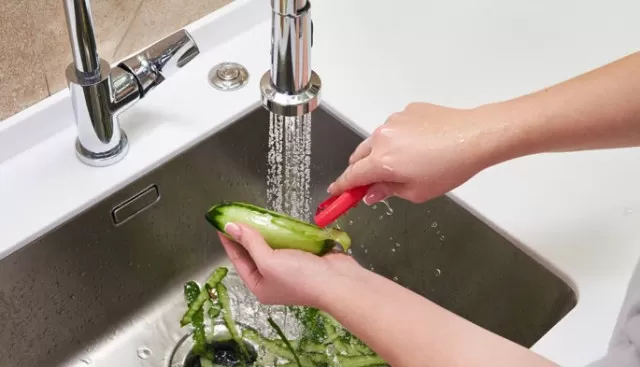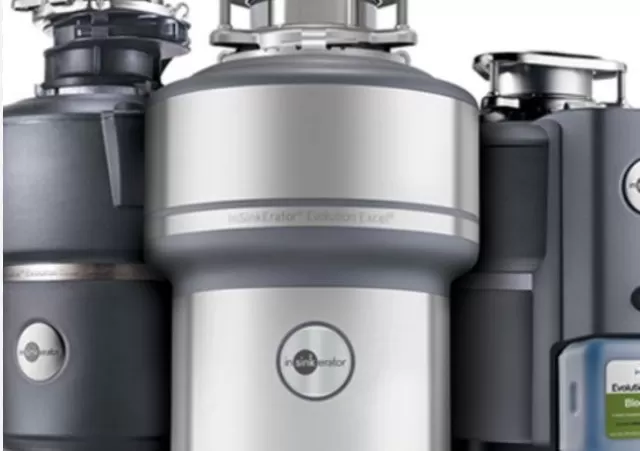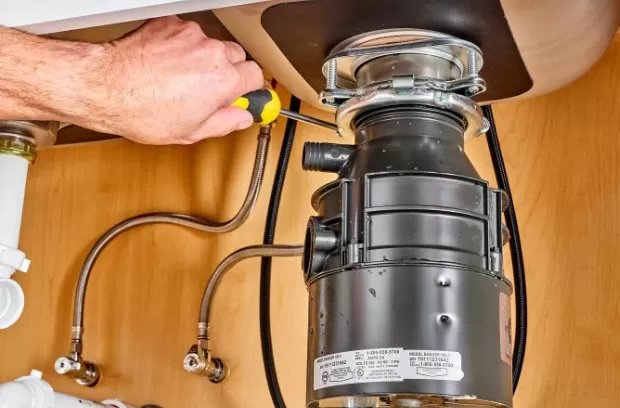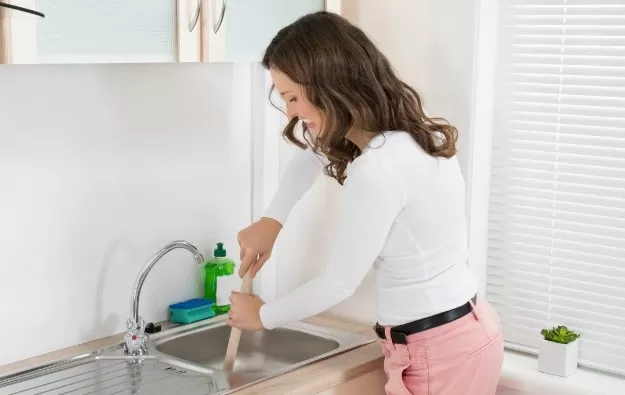If your garbage disposal has stopped working, there are a few common symptoms you may notice.
It could be humming but not working, leaking water, or failing to turn on when you flip the switch.Fortunately, fixing a garbage disposal is usually straightforward. First, try pressing the reset button on the bottom of the unit. If that doesn’t work, the most common causes of garbage disposal failure include electrical issues, jammed grinding mechanisms, faulty seals in the mounting or pipe connections, and clogs in the drain pipe.
These problems are usually easy to diagnose and fix. By following some simple troubleshooting steps, you can get your garbage disposal back up and running in no time
A Guide to Different Types of Garbage Disposals

Garbage disposals come in different types, with batch feed and continuous being the most common.
With batch feed disposals, you must place the cover over the drain opening to activate the disposal. Continuous models, on the other hand, use a switch to turn the unit on and off.
Another option is an air switch model that uses air to activate the disposal.
Regardless of the type, all garbage disposals require power from an outlet located under the sink.
It’s also useful to know the different parts of a garbage disposal to better understand how it works.
By understanding the different types of garbage disposals and their components, you can make an informed decision when selecting a disposal that meets your needs.
Keep reading to learn more about the anatomy of a garbage disposal.
How to Troubleshoot a Garbage Disposal That Doesn’t Turn On

When you flip the switch on your garbage disposal and nothing happens, it’s likely there is an electrical problem preventing the appliance from getting power.
To diagnose and fix the problem, start with the most common and easy solutions, and move on to more complex issues if needed:.
Make sure the disposal is plugged in.
This may seem obvious, but it’s the most common reason for garbage disposals to not work. Press the reset button on the bottom of the unit to see if it has “tripped.
” This button operates as a built-in circuit breaker and can be reset by pushing it back in. Check the main service panel to see if the circuit breaker has tripped.
Reset the lever if needed. If the disposal is hardwired, you may need to check the wiring for power.
If neither the reset button nor the circuit breaker is the cause, inspect the switch controlling the disposal. Check the wire connections and tighten them if they’re loose.
If the connections are secure, replace the switch. If the disposal still doesn’t turn on and the motor doesn’t make any noise, it’s likely the disposal is faulty and needs to be replaced.
By following these troubleshooting steps, you can identify and fix most common electrical problems with your garbage disposal.
How to Fix a Garbage Disposal That Hums But Won’t Grind

If your garbage disposal won’t grind but makes a humming sound when you turn it on, it’s likely that the inner flywheel is jammed.
This can cause the reset button to pop or the circuit breaker to trip quickly, so it’s important to address the issue promptly to avoid damaging the motor.
The most common cause of a jammed garbage disposal is food or a foreign object lodged between the impeller and the shredder ring inside the unit.
Here’s how to fix a garbage disposal jam and stop the humming:.
Turn off power to the disposal at the electrical service panel and the wall switch.
Insert the offset wrench that came with the disposal or a large Allen wrench into the flywheel turning hole at the bottom of the unit. Turn it clockwise to dislodge the stuck impeller or flywheel.
Alternatively, use a wooden spoon handle or similar object to lever the flywheel free. Use a flashlight to check the disposal for the object that caused the jam, such as bones or pieces of dinnerware.
Use pliers to remove the foreign object if you see it. Once the flywheel is freed, turn the power back on at the service panel, but don’t turn on the disposal yet.
Press the red reset button on the bottom of the unit. Run water into the disposal and quickly turn the switch on and off in short bursts.
This should spin the flywheel and wash away any dislodged debris. Remember to never put your hand down the garbage disposal hopper and always turn off the power before attempting to fix a jammed disposal.
By following these steps, you can fix a humming garbage disposal and restore its functionality.
How to Fix a Leaking Garbage Disposal

Garbage disposals can leak from various locations, including the sink flange where the unit connects to the sink, the hose that carries wastewater from the dishwasher, and the hose that discharges waste to the drain system.
Here’s how to fix a leaking garbage disposal:
Leak at the Sink Flange:.
Turn off power to the disposal at the electrical service panel.
Loosen and remove the disposal from its mounting flange under the sink by turning it to the left. Tighten the three mounting bolts that hold the flange to the sink.
If the bolts are tight, apply new plumber’s putty between the sink flange and the sink, and re-tighten the bolts to draw the flange tight to the sink surface. Reinstall the disposal and turn the power back on.
Check for leaks while running water in the sink. Leak at the Dishwasher Connection:.
Tighten the hose clamp on the dishwasher hose connected to the disposal’s inlet.
Replace the hose if it continues to leak. Leak at the Discharge Drainpipe:.
Check the bolts holding the discharge pipe to the disposal and tighten them if necessary.
If the problem persists, remove the bolts and the pipe, and replace the gasket seal between the pipe and the disposal. Reinstall the bolts and tighten them down.
By following these steps, you can fix a leaking garbage disposal and prevent water damage to your kitchen.
How to Fix a Garbage Disposal That Drains Slowly

If your garbage disposal is draining slowly, the most likely cause is a clog in the pipes.
Fortunately, fixing this problem is usually a matter of disassembling the drain trap and discharge pipe and cleaning out any food waste that’s blocking the flow.
Here’s how to do it:.
Turn off power to the disposal by unplugging it or switching off the circuit breaker.
Remove the bolts holding the discharge pipe to the disposal. Disconnect the drain trap and remove the trap and the discharge drainpipe.
Check for clogs or obstructions and clean the disposal. If the clog is in the branch drain line, use a sink auger to clear it.
Reassemble the drain trap and reconnect the discharge tube to the side of the garbage disposal. Turn on the power and run water to check that the disposal drains freely.
It’s important to avoid certain practices that can lead to clogs or damage to your garbage disposal. For example, don’t grind up potato peelings, coffee grounds, or eggshells, which can create a paste or granular waste that sticks to the pipes.
Instead, maintain your disposal by grinding up pieces of lemon peel and ice cubes and treating it with a mixture of baking soda and vinegar every month. By following these tips, you can keep your garbage disposal in good working order and avoid slow-draining problems.
Safety First: How to Repair Your Garbage Disposal Without Risking Injury
While the idea of getting body parts severed in a garbage disposal may be a popular horror movie trope, the reality is much less dramatic.
Garbage disposal blades are not razor-sharp sabers but rather dull grinders. However, that doesn’t mean you can be careless when repairing your disposal. Following basic safety measures is crucial to avoid painful injuries.
The most important rule when working on a garbage disposal is to never put your hands inside it.
Even if you think you’ve unplugged the disposal or turned off its circuit, there’s always a risk of the unit accidentally getting turned on while your fingers are in the opening. Don’t take unnecessary risks.
Protect yourself by following this simple safety rule.
*The information is for reference only.